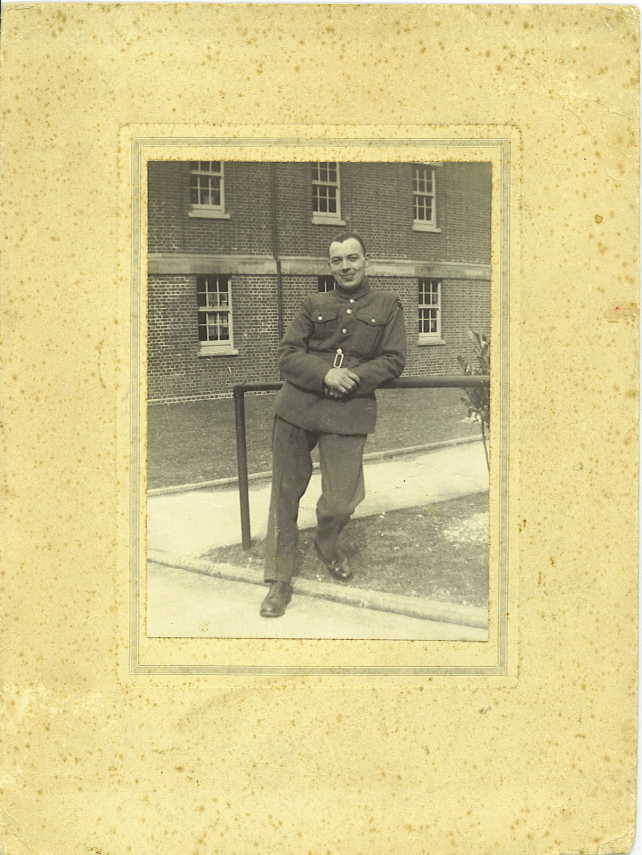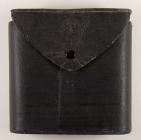Content can be downloaded for non-commercial purposes, such as for personal use or in educational resources.
For commercial purposes please contact the copyright holder directly.
Read more about the The Creative Archive Licence.
Description
Tegwyn Davies Jones was born in Birkenhead in 1913. His parents were Edward Peter and Mary Elizabeth Jones. They lived in Birkenhead at the time of his birth.
Edward Peter Jones came from Rhyl and was a ship’s engineer. Tegwyn’s mother, Mary, was from Glyndyfrdwy and was the daughter of Edward and Margaret Davies.
When Tegwyn was 8 his mother died, and he moved to Glyndyfrdwy to live with his grandparents. When he was old enough, Tegwyn worked at the Moel Fferna Slate Quarry and also helped out at local farms. After this he became a Depot Hand in the Royal Air Force stationed in Hucknall, Nottingham. Tegwyn was part of the 98th Squadron.
On the 12th April 1939, Tegwyn married Blodwen Edwards from Corwen.
Tegwyn was deployed to France where he found himself being evacuated on board RMS Lancastria.
RMS Lancastria was a British Ocean liner which had been requisitioned by the UK Government during the Second World War. Its sinking formed one of the biggest propaganda secrets of the Second World War.
Launched in 1920 on the River Clyde for the Anchor Line, the Lancastria (originally the Tyrrhenia) was the sister ship of RMS Cameronia. Her maiden voyage was from Glasgow to Montreal. At the outbreak of the Second World War the Lancastria was in the Bahamas. She was ordered to sail from Nassau to New York for refitting to become HMT Lancastria – i.e. a troopship.
After participating in the evacuation of Norway and the transfer of troops to Iceland, the Lancastria was sent to St Nazaire from Liverpool, as part of Operation Ariel to evacuate British nationals and troops from France (this was two weeks after the Dunkirk evacuation). The Lancastria had a capacity of 3,000 people “at a pinch”. The Captain was ordered to take on as many as possible without worrying about any limits of International Law. By the mid-afternoon of 17 June there were somewhere between 4,000 and 9,000 people on board, including RAF personnel, Pioneer and Royal Army Service Corp Soldiers and some civilians. Whilst the evacuation was taking place, the German Airforce attacked the ships docked in the harbour. During a raid at 15:50 by Junkers Ju 88 the Lancastria was hit by three or four bombs, one of which it is often claimed went through one of the ship’s funnels and entered No. 4 hold. The ship was equipped with sixteen lifeboats and 25 lifejackets but many of the boats had been damaged during the attack. The ship sank at 16:12.
The Lancastria Association has evidence of 1,738 who died but the actual figure will probably never be known. It is estimated that as many as 6,500 could have died making it the largest loss of life in British maritime history. The families of those who died at the time were just advised that they died with the British Expeditionary Force.
The immense loss of life was such that Winston Churchill immediately suppressed news of the disaster telling his staff that “The newspapers have got quite enough disaster for today at least”. In his memoirs, Churchill stated that he had intended to lift the ban a few days later, but as events overtook him, he left the ban as it was. It was not therefore, officially reported in the UK papers until July and even then, the true extent was not known.
Tegwyn was one of the casualties. The exact details are not known. Tegwyn is remembered on the Glyndyfrdwy Memorial and was also remembered in the Baptist Church where his family are buried. The official Memorial to those who were killed is the Runnymead Memorial in Surrey. This is looked after by the Commonwealth War Graves Commission.
Tegwyn received the Gold Star medal for his part in the Battle of Britain.






Do you have information to add to this item? Please leave a comment
Comments (0)
You must be logged in to leave a comment